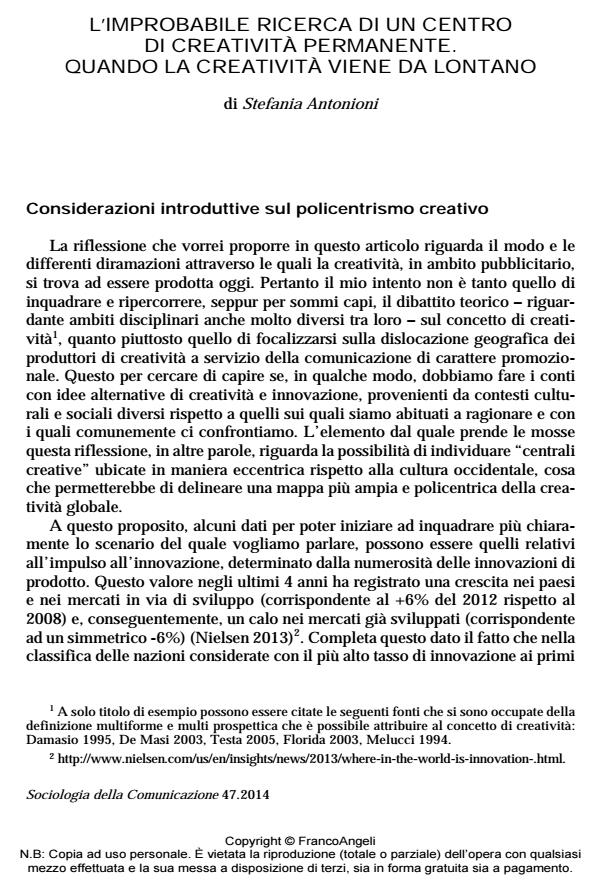The unlikely research of a permanent center of creativity. When creativity came from afar
Journal title SOCIOLOGIA DELLA COMUNICAZIONE
Author/s Stefania Antonioni
Publishing Year 2014 Issue 2014/47
Language Italian Pages 11 P. 77-87 File size 108 KB
DOI 10.3280/SC2014-047007
DOI is like a bar code for intellectual property: to have more infomation
click here
Below, you can see the article first page
If you want to buy this article in PDF format, you can do it, following the instructions to buy download credits

FrancoAngeli is member of Publishers International Linking Association, Inc (PILA), a not-for-profit association which run the CrossRef service enabling links to and from online scholarly content.
This paper tries to enlighten the different dimensions of creativity applied to advertising. The fields where this peculiar kind of creativity are applied are connected to digital technologies and to urban spaces, the latter giving place to all the forms of ambient advertising. This form of communication is especially produced in the so called emerging economies, and this fact makes clear that the very center of creativity is moving (or has just moved) in other territories. So the paper shows some examples of this kind of campaigns, many of which were awarded in the last two editions of Cannes advertising festival.
Keywords: Creativity, ambient advertising, outdoor advertising, emerging economies, digital platforms.
Stefania Antonioni, L’improbabile ricerca di un centro di creatività permanente. Quando la creatività viene da lontano in "SOCIOLOGIA DELLA COMUNICAZIONE " 47/2014, pp 77-87, DOI: 10.3280/SC2014-047007